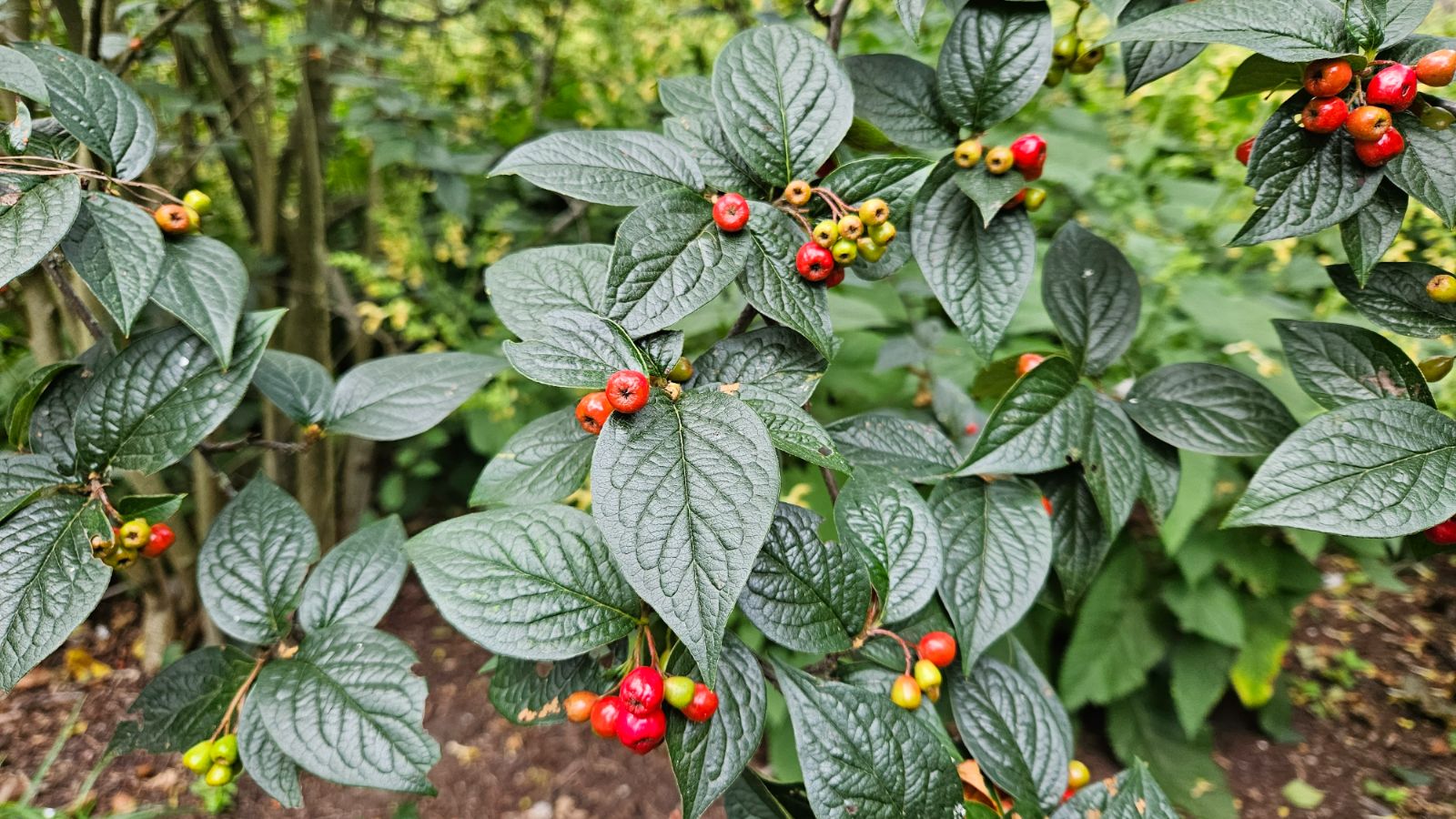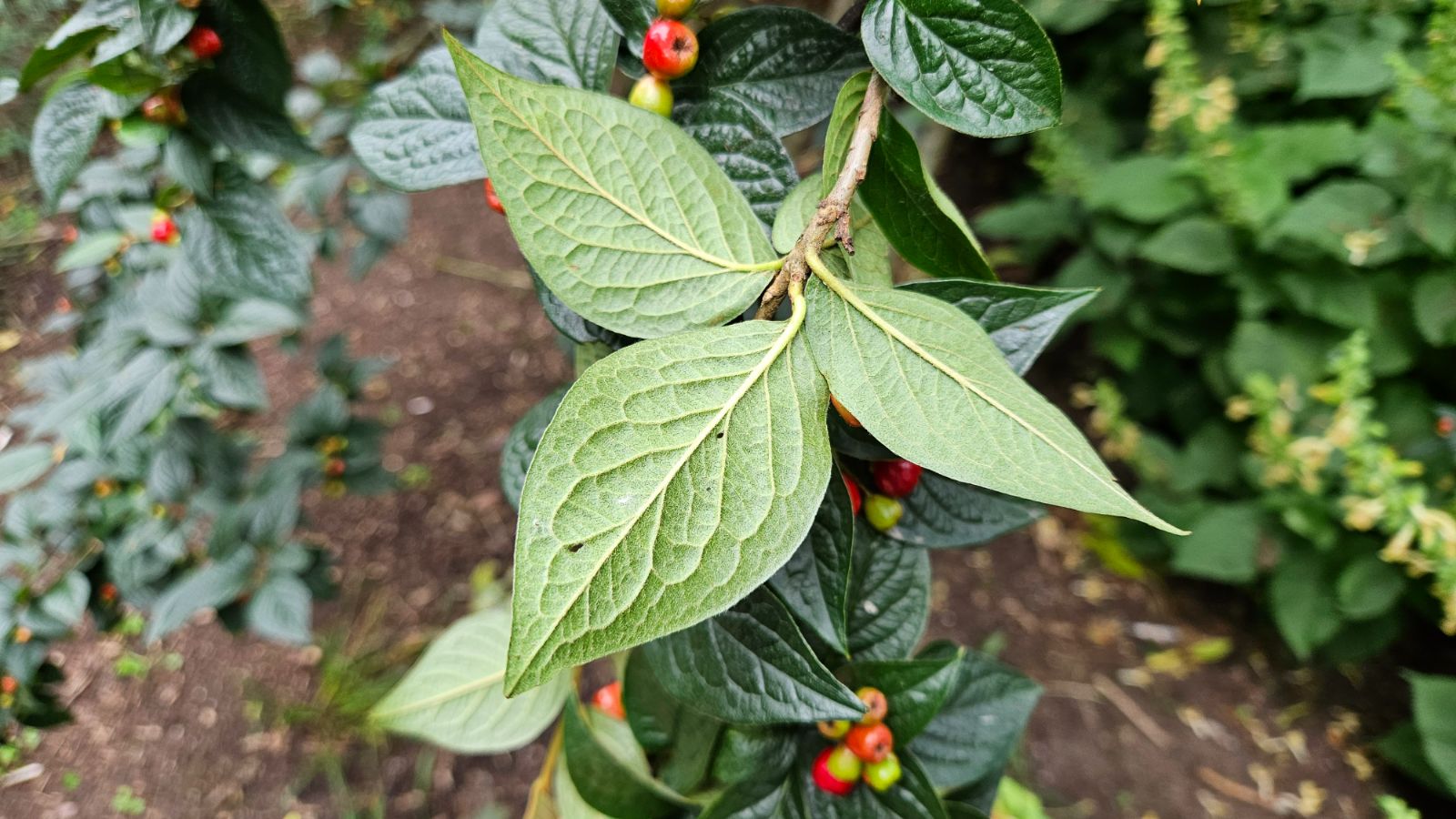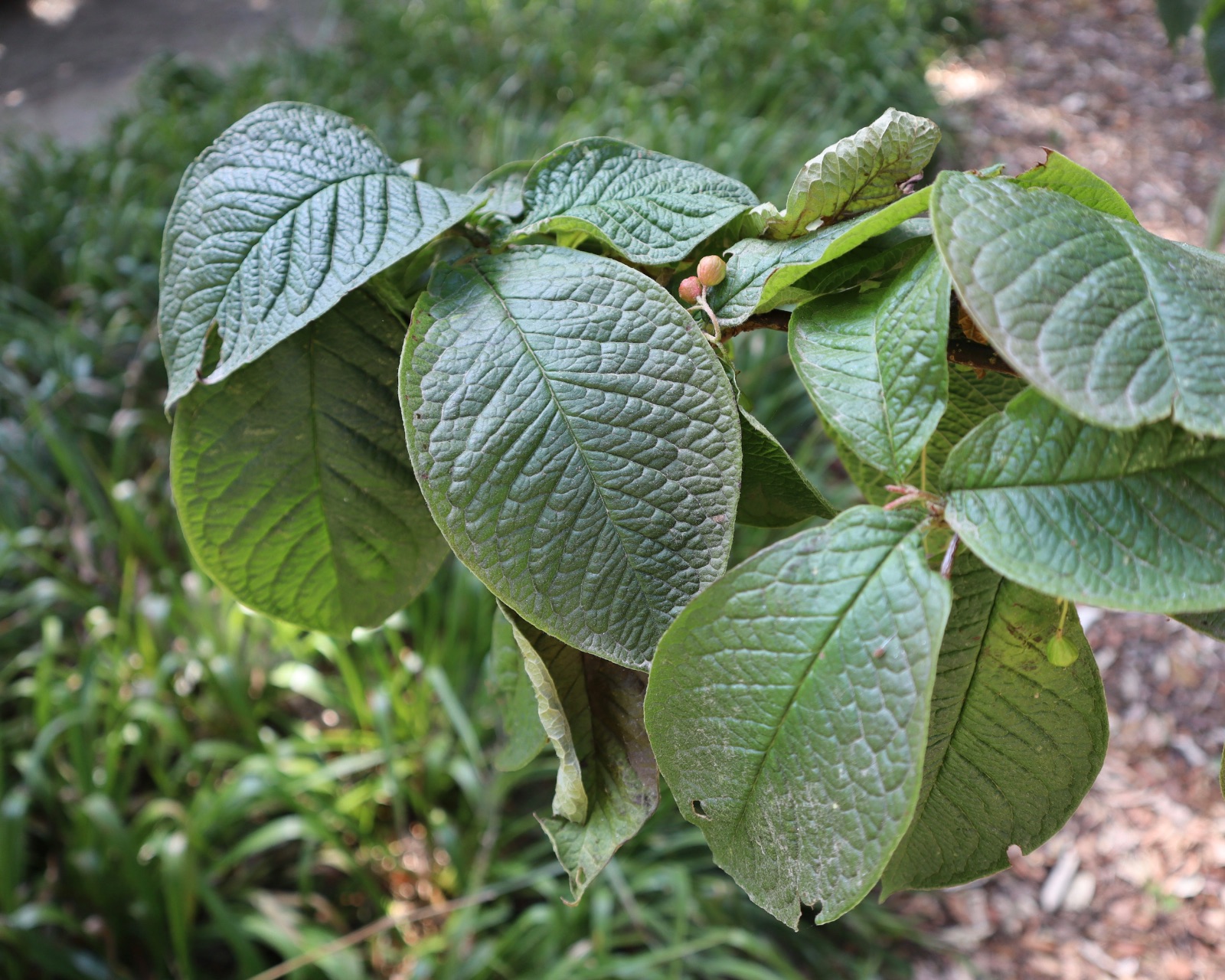Cotoneaster bullatus
Credits
Article from Bean's Trees and Shrubs Hardy in the British Isles
Recommended citation
'Cotoneaster bullatus' from the website Trees and Shrubs Online (treesandshrubsonline.
Genus
Infraspecifics
Other taxa in genus
- Cotoneaster acuminatus
- Cotoneaster acutifolius
- Cotoneaster adpressus
- Cotoneaster affinis
- Cotoneaster ambiguus
- Cotoneaster amoenus
- Cotoneaster apiculatus
- Cotoneaster buxifolius
- Cotoneaster congestus
- Cotoneaster conspicuus
- Cotoneaster cooperi
- Cotoneaster dammeri
- Cotoneaster dielsianus
- Cotoneaster distichus
- Cotoneaster divaricatus
- Cotoneaster foveolatus
- Cotoneaster franchetii
- Cotoneaster frigidus
- Cotoneaster glabratus
- Cotoneaster glaucophyllus
- Cotoneaster harrovianus
- Cotoneaster hebephyllus
- Cotoneaster henryanus
- Cotoneaster horizontalis
- Cotoneaster hupehensis
- Cotoneaster integerrimus
- Cotoneaster lacteus
- Cotoneaster lindleyi
- Cotoneaster lucidus
- Cotoneaster melanocarpus
- Cotoneaster microphyllus
- Cotoneaster moupinensis
- Cotoneaster multiflorus
- Cotoneaster nitens
- Cotoneaster nitidifolius
- Cotoneaster obscurus
- Cotoneaster pannosus
- Cotoneaster prostratus
- Cotoneaster racemiflorus
- Cotoneaster rhytidophyllus
- Cotoneaster rotundifolius
- Cotoneaster rubens
- Cotoneaster salicifolius
- Cotoneaster simonsii
- Cotoneaster tomentosus
- Cotoneaster turbinatus
- Cotoneaster uniflorus
- Cotoneaster zabelii
A deciduous shrub 10 to 12 ft (perhaps more) high, of rather spare habit; the branches few, long and arching, bark blackish brown covered with dark hairs when young. Leaves ovate or oblong; 11⁄2 to 31⁄2 in. long, about half as wide, pointed, dark green and slightly hairy above, paler and felted beneath with grey or yellowish down; between the veins the leaf-blade has a swollen (bullate) appearance; stalk 1⁄12 in. long. Flowers in corymbs of from ten to thirty; each corymb 1 to 2 in. across, borne on short leafy branches; stalks downy. Petals rosy white, soon falling; calyx hairy, with short triangular lobes. Fruit brilliant red, pear-shaped or round, 1⁄3 in. wide.
Native of W. China and Tibet; first cultivated in France about the year 1898, by Maurice de Vilmorin at Les Barres. It is undoubtedly one of the finest of the species introduced in this century. Of flower-beauty it has none, for it has rarely more than two or three flowers expanded on one cluster at a time, and the petals fall almost as soon as they open. But it is very handsome indeed in fruit, the clusters, many of them 2 in. across, being set on the shoot about 1 in. apart in opposite rows. Strictly the plant described above should be distinguished as C. bullatus f. floribundus (Stapf) Rehd. & Wils. (C. moupinensis f. floribundus Stapf, in Bot. Mag., t. 8284). The plant that Bois took as the type of the species was greatly inferior in garden value, having up to twelve flowers only in each inflorescence and smaller fruits.
C. bullatus may also be in cultivation from seed collected in S.E. Tibet by Ludlow, Sherriff and Taylor (who found it as a tree up to 25 ft high – LST 6441), and by Kingdon Ward (KW 10906).
From the Supplement (Vol. V)
† cv. ‘Firebird’. – Fruits unusually large, about 1⁄2 in. long, obovoid, orange-red. Raised in Holland from seeds received from the Royal Horticultural Society’s Garden at Wisley in 1950 (Dendroflora No. 3 (1966), p. 8).
var. macrophyllus Rehd. & Wils.
Synonyms
C. rehderi Pojark
The leaves larger than in the type, being up to 6 in. long; calyx glabrous except on the margins. Discovered by Wilson in 1908 in W. Szechwan and in cultivation in the R.H.S. Garden, Wisley.



